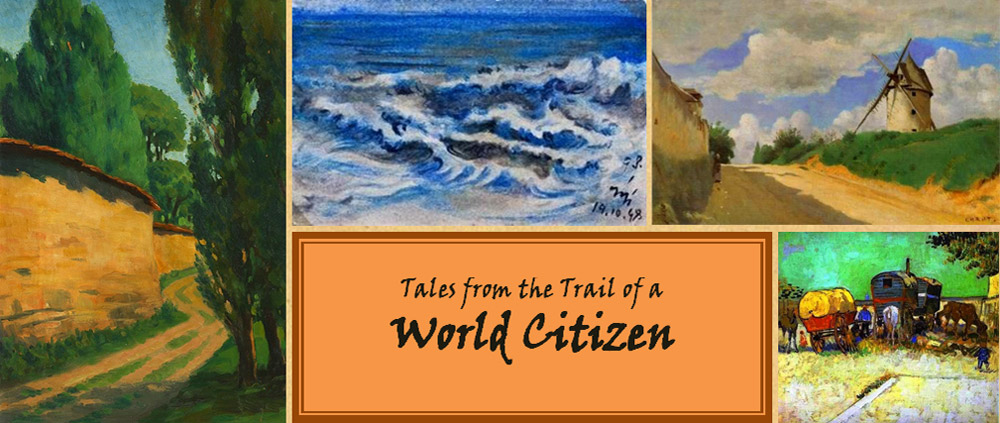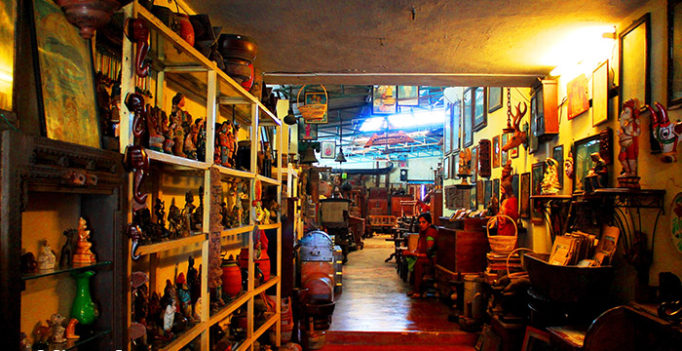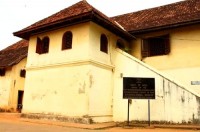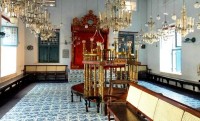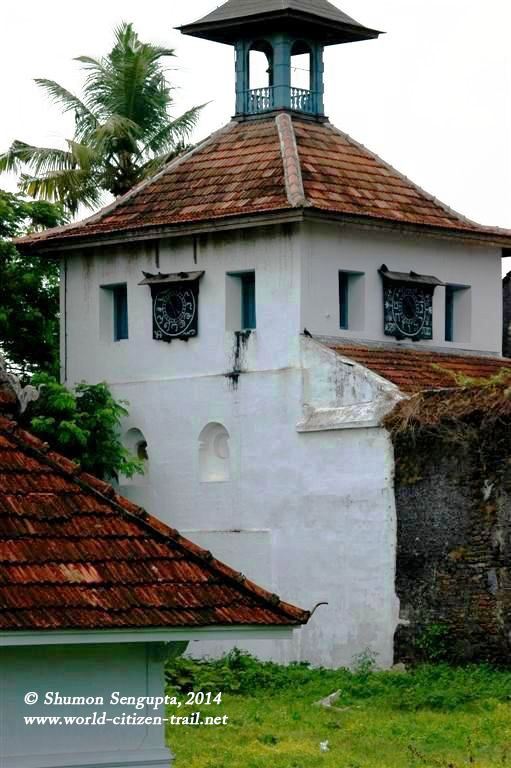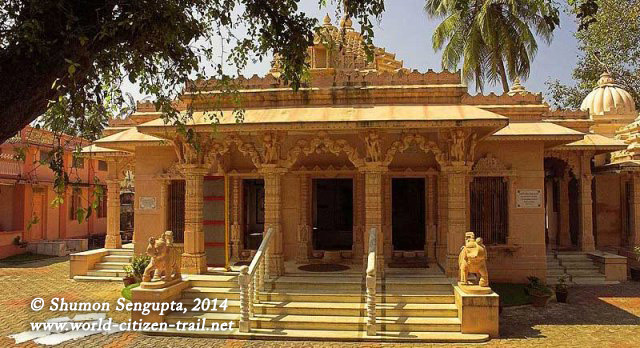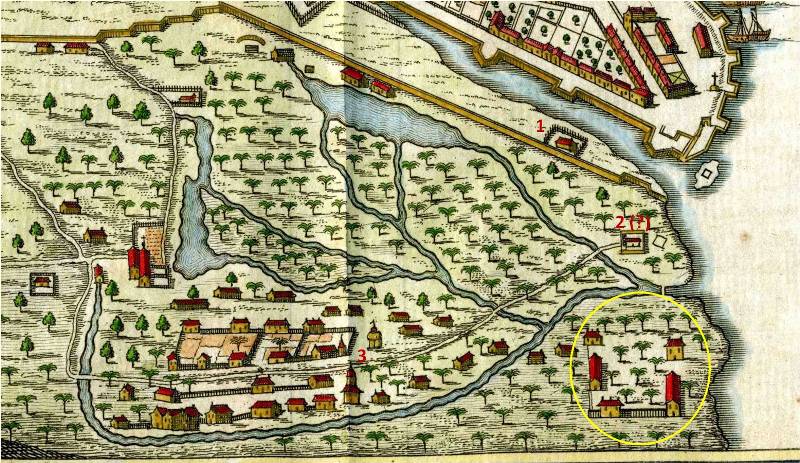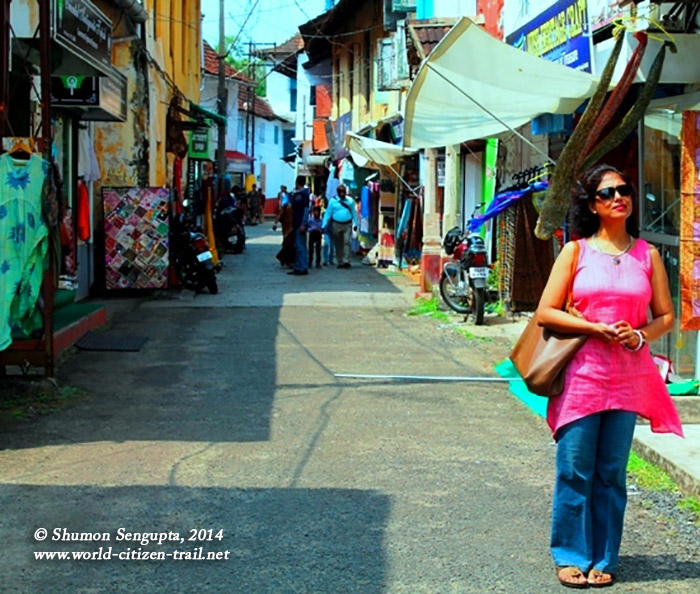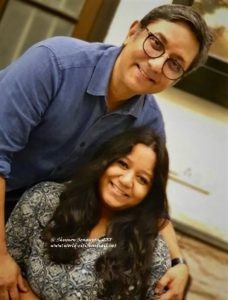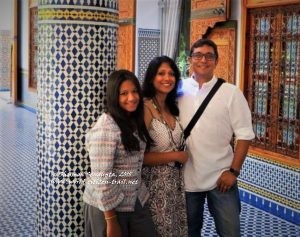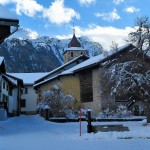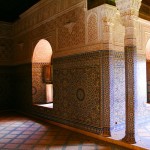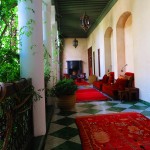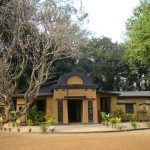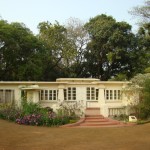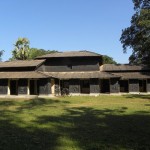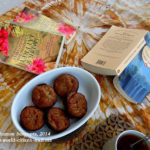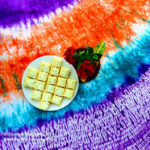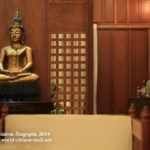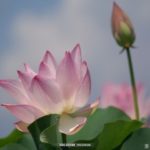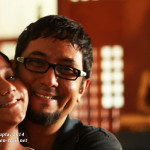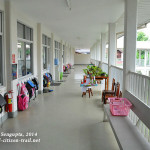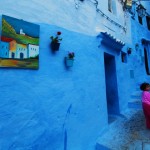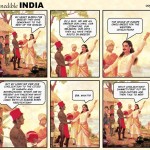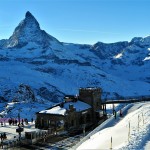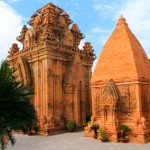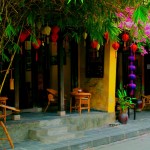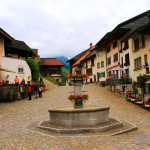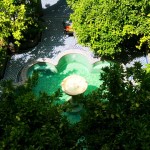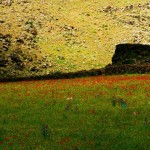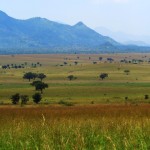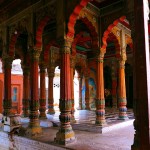*********************************************************************
In my previous post, I wrote about our visit to the 16th century Jewish Synagogue – called the Paradesi Synagogue in Mattancherry, Kochi. I also wrote at length about our visit to the Dutch Palace, with its spectacular murals. We were touring Kerala, “God’s Own Countr”y with Compass India Inc.
In this post, I shall write about our trip to the medieval Jew Town and the equally antiquated spice market in Jew Town.
******************************************************************
Jew Town:
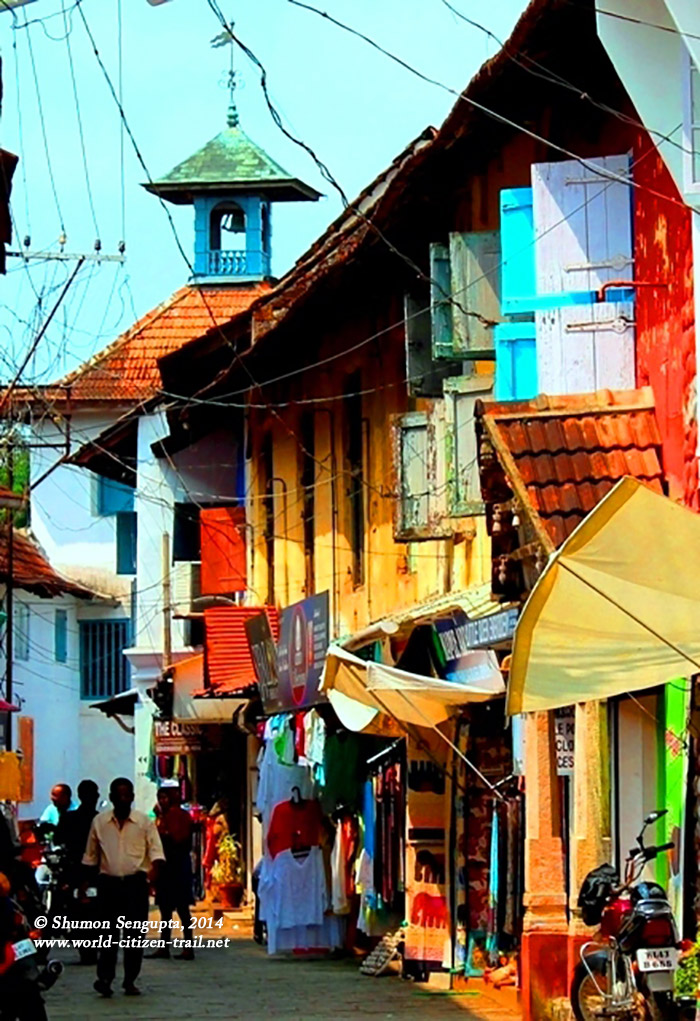
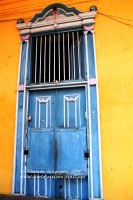 In the early 16th century, following their expulsion from the Iberian Peninsula (mainly Holland, Spain and Portugal) a few families of Sephardic Jews eventually made their way to Kochi. Many of them were said to have come by way of Aleppo, Constantinople and the land that is now known as the State of Israel, to Kochi.
In the early 16th century, following their expulsion from the Iberian Peninsula (mainly Holland, Spain and Portugal) a few families of Sephardic Jews eventually made their way to Kochi. Many of them were said to have come by way of Aleppo, Constantinople and the land that is now known as the State of Israel, to Kochi.
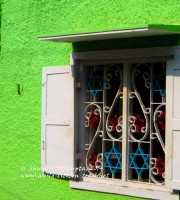 In Kochi, these newcomers who spoke the ancient Sephardic language of Ladino, were given land by the local ruler – Raja Rama Varma to build a settlement (the Jew Town) and a Synagogue.They formed the Paradesi (meaning foreigner) community of the Kochi Jews.
In Kochi, these newcomers who spoke the ancient Sephardic language of Ladino, were given land by the local ruler – Raja Rama Varma to build a settlement (the Jew Town) and a Synagogue.They formed the Paradesi (meaning foreigner) community of the Kochi Jews.
Then in the late 19th century, a few Arabic Jews from Baghdad and Persia and some other Jews from Germany also immigrated to India. Some of them settled in Jew Town in Mattancherry and joined the ranks of the Paradesi Jews.
Although only a handful of Paradesi Jews now reside in Jew Town, it is a place that has to be seen to be believed. If one can ignore the modern electric poles and lines; the old buildings lining the streets – many of which date back to the 17th century, lend a medieval feel to the place. Jew town certainly feels like being in a time warp – at a different space-time continuum altogether.

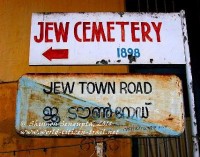 Spread over a couple of the narrow parallel streets between the Dutch Palace and the Paradesi Synagogue, Jew Town is full of curio shops teaming with artifacts – contemporary as well as antique. The buildings on the two sides of the lanes are two storied and are very similar in structure, although the façades are different. Some of them are painted in flamboyant colors, while others are not so well maintained. They have windows opening into the street and have sloping roofs, mainly tiled. Some of them have charming little porticos and balconies overlooking the street.
Spread over a couple of the narrow parallel streets between the Dutch Palace and the Paradesi Synagogue, Jew Town is full of curio shops teaming with artifacts – contemporary as well as antique. The buildings on the two sides of the lanes are two storied and are very similar in structure, although the façades are different. Some of them are painted in flamboyant colors, while others are not so well maintained. They have windows opening into the street and have sloping roofs, mainly tiled. Some of them have charming little porticos and balconies overlooking the street. 
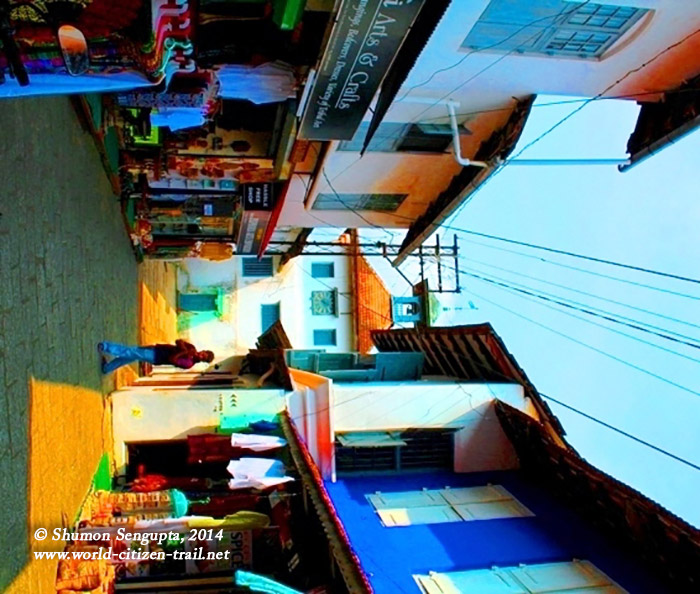
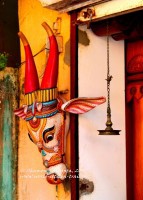 It must however be noted that the curio shops are a much later day feature. From 1948, after the State of Israel was born, large number of Cochin Jews started leaving for their promised land. As a result, the houses occupied by them in Jew Town fell vacant and were bought by non-Jewish people. Furniture, utensils, curios, replicas as well as genuine antiques that were left behind by the Jews were collected and then put up for sale in the houses lining the streets. As tourism in the area grew, demand for curios and handicrafts grew significantly and eventually many of these shops started selling a wide range of commodities, including curios from other parts of India as well from Tibet, Arab, China and Europe, in addition to garments, spices, herbal concoctions and various kinds of nick knacks.
It must however be noted that the curio shops are a much later day feature. From 1948, after the State of Israel was born, large number of Cochin Jews started leaving for their promised land. As a result, the houses occupied by them in Jew Town fell vacant and were bought by non-Jewish people. Furniture, utensils, curios, replicas as well as genuine antiques that were left behind by the Jews were collected and then put up for sale in the houses lining the streets. As tourism in the area grew, demand for curios and handicrafts grew significantly and eventually many of these shops started selling a wide range of commodities, including curios from other parts of India as well from Tibet, Arab, China and Europe, in addition to garments, spices, herbal concoctions and various kinds of nick knacks. 



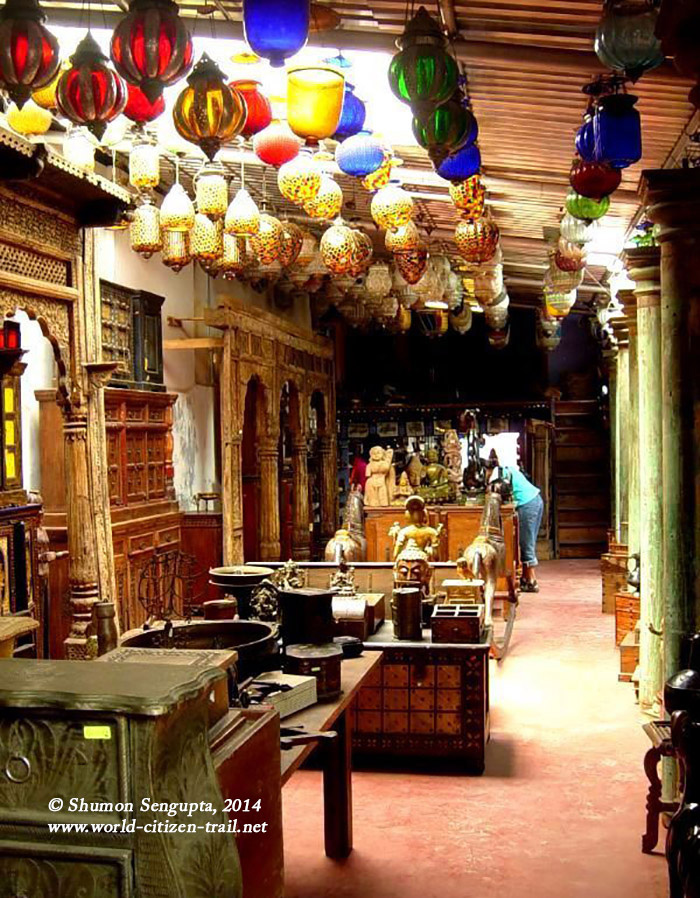
 As we browsed through the shops, we found a mind boggling range of curios and artifacts for sale. Many of them were exquisite, and very expensive. Wooden and metal figurines, traditional metal ware, old brass lamps, metal pots and urns of different kinds (from small to very large and heavy), wood carvings, old wooden pillars and intricately carved doors, wooden furniture, chandeliers, ceramics and glass wares, jewelry, statuettes and various other ethnic and modern handicrafts like masks, mirrors, wall hangings, paintings, vintage photographs, carpets, rugs, handmade toys etc were to be found. Many artifacts, the genuine ones, had been collected from old homes, churches and temples of Kerala.
As we browsed through the shops, we found a mind boggling range of curios and artifacts for sale. Many of them were exquisite, and very expensive. Wooden and metal figurines, traditional metal ware, old brass lamps, metal pots and urns of different kinds (from small to very large and heavy), wood carvings, old wooden pillars and intricately carved doors, wooden furniture, chandeliers, ceramics and glass wares, jewelry, statuettes and various other ethnic and modern handicrafts like masks, mirrors, wall hangings, paintings, vintage photographs, carpets, rugs, handmade toys etc were to be found. Many artifacts, the genuine ones, had been collected from old homes, churches and temples of Kerala. 
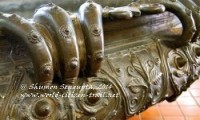 In one of the shops, we found a massive traditional Kerala boat – the Vallam, laden with spices. It took up the entire length of the shop floor. In another shop, we found a massive, heavy, flat and ornate cooking pot, called Uruly in Malayalayam. Almost three meters in diameter, it was big enough for a man/woman to bathe in!
In one of the shops, we found a massive traditional Kerala boat – the Vallam, laden with spices. It took up the entire length of the shop floor. In another shop, we found a massive, heavy, flat and ornate cooking pot, called Uruly in Malayalayam. Almost three meters in diameter, it was big enough for a man/woman to bathe in!  Jew Town also had many Kashmiri shops, so you got a slice of Kashmir in Kerala if you like. Totally incongruous, but why not I thought. And like many other touristy places in India, you are pestered by the shopkeepers to visit their store here too. But then that is an integral part of the experience.
Jew Town also had many Kashmiri shops, so you got a slice of Kashmir in Kerala if you like. Totally incongruous, but why not I thought. And like many other touristy places in India, you are pestered by the shopkeepers to visit their store here too. But then that is an integral part of the experience. 
 In short, Jew Town was a curio lover’s paradise, whether one bought anything or not. The prices of what was on sale varied greatly – was rather arbitrary because the same thing could cost half the price in the next shop. So, we were never sure if we were paying the right amount, or were being ripped off.
In short, Jew Town was a curio lover’s paradise, whether one bought anything or not. The prices of what was on sale varied greatly – was rather arbitrary because the same thing could cost half the price in the next shop. So, we were never sure if we were paying the right amount, or were being ripped off.
*****************************************************************
The last of the Paradesi Jews:
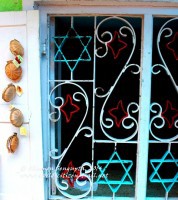 Along the Jew Town Road, also known as the Jew Street, we visited the house of Sara Cohen, among the last of the Paradesi Jews to remain in Cochin. The decorative iron grill / iron work of her window subtly bore the symbol her faith – the Star of David. We found Sarah, who I estimate is over 90 years old, pottering around in her neighborhood, mumbling something in Malayalayam to her attendant. Although frail in body, she appeared to be in good health and high spirits and seemed to know her mind well. Decency and good sense got the better of me and I decided, in deference to her age, not to bother her with my questions (I had a thousand buzzing in my head) or request her to pose for me. I have instead used a couple of her photographs from the net and included one taken by me from distance.
Along the Jew Town Road, also known as the Jew Street, we visited the house of Sara Cohen, among the last of the Paradesi Jews to remain in Cochin. The decorative iron grill / iron work of her window subtly bore the symbol her faith – the Star of David. We found Sarah, who I estimate is over 90 years old, pottering around in her neighborhood, mumbling something in Malayalayam to her attendant. Although frail in body, she appeared to be in good health and high spirits and seemed to know her mind well. Decency and good sense got the better of me and I decided, in deference to her age, not to bother her with my questions (I had a thousand buzzing in my head) or request her to pose for me. I have instead used a couple of her photographs from the net and included one taken by me from distance.
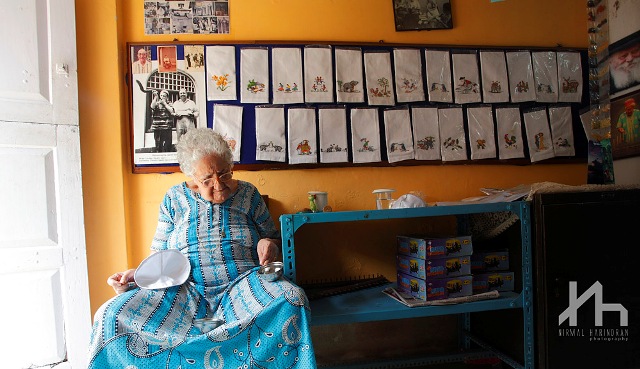
Sara Cohen: Photo Credit: Nirmal Harindran; Source: http://kochimuziris.blogspot.in/

Sara Cohen – Wearing a traditional kippa and in her pale yellow dress …: Photo Credit: Thulasi Kakkat
The foyer of her house also served as a little shop in which, in addition to other nick knacks and handmade herbal soaps, we found some of the exquisite embroidery work that Sara still does. I was fascinated to see the old sepia photographs of her family that adorn the walls. These capture an era now long gone and I couldn’t help being gripped by a strong feeling of nostalgia.
The few Paradesi Jews who remain in the area are said to speak fluent Malayalam and at the same time, I am told, have held on fast to their own customs and rituals. 


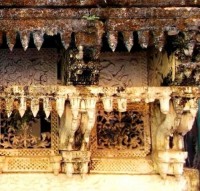 The Jews have all, but a handful, gone – their villas now occupied by a different people, many of these homes converted to curio shops and other stores. Many are crumbling and dilapidated.
The Jews have all, but a handful, gone – their villas now occupied by a different people, many of these homes converted to curio shops and other stores. Many are crumbling and dilapidated.
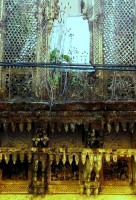 Over her 90 years, Sarah would have seen the full cycle of life in her community – births, weddings, deaths and funerals, meetings and partings, joys and sorrows, celebrations and mourning; she would have known people, made friends and then eventually seen them leave one by one while she chose to stay back.
Over her 90 years, Sarah would have seen the full cycle of life in her community – births, weddings, deaths and funerals, meetings and partings, joys and sorrows, celebrations and mourning; she would have known people, made friends and then eventually seen them leave one by one while she chose to stay back.
 Looking at Sara, I tried visualizing her as a young girl, playing in the streets of Jew Town during a time when their numbers were many, when the Synagogue would be full of worshippers, when there would be vibrant community events such as Jewish festivals and weddings celebrated in their full glory, when the streets would be throbbing with life, decorated and lit up for the festivities, when children, women and men would turn up in their finest traditional attire, when the traditional Jewish delicacies would be prepared and shared in large quantities…. Sara would have, in her earlier days, been a part of all that.
Looking at Sara, I tried visualizing her as a young girl, playing in the streets of Jew Town during a time when their numbers were many, when the Synagogue would be full of worshippers, when there would be vibrant community events such as Jewish festivals and weddings celebrated in their full glory, when the streets would be throbbing with life, decorated and lit up for the festivities, when children, women and men would turn up in their finest traditional attire, when the traditional Jewish delicacies would be prepared and shared in large quantities…. Sara would have, in her earlier days, been a part of all that.
At the same time, she has also been a part of the dramatic changes Jew Town has been witness to, leading to its rapid decline over the second half of the last century. A place that once hosted a thriving community and culture is now merely a tourist attraction, with nothing but a few vestiges of its past splendor. Sara, I realized, had lived through a glorious history, had witnessed its eventual decline and was at the end of its last chapter. She was the very last few lines of a history book, I realized.
Laden with history, while the old facades, walls and narrow lanes of Jew town tell mute tales of glories long past, the old clock at the Synagogue continues to ring to the passage of time.
******************************************************************
The Medieval Spice Market near Jew Town:

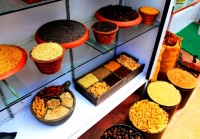
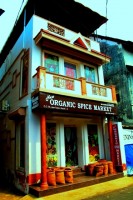 We retraced our steps over Jew Street on to a perpendicular street that leads, past the newer shops selling spices, into the old spice market.
We retraced our steps over Jew Street on to a perpendicular street that leads, past the newer shops selling spices, into the old spice market. 

Medieval Warehouses:
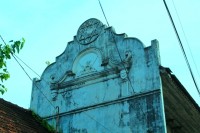 The centuries old spice market – a street lined by old warehouses, runs parallel to the shore. In the past, traders were mainly Jews; when Mattancherry, the biggest spice market in the continent, was the hub of a thriving spice trade. Jewish spice traders have however long gone and their place has been taken by other people. Some warehouses have also closed down, I was told.
The centuries old spice market – a street lined by old warehouses, runs parallel to the shore. In the past, traders were mainly Jews; when Mattancherry, the biggest spice market in the continent, was the hub of a thriving spice trade. Jewish spice traders have however long gone and their place has been taken by other people. Some warehouses have also closed down, I was told.
 Although long past its heydays as the largest and busiest spice market in Asia, this market continues to be an important center for local and international trade in spices. Some of these warehouses, many over three hundred years old, still store in large quantities spices like ginger, pepper, cardamom, cinnamon, cloves, turmeric, nutmeg, mace, chillies etc. And these are of the finest quality. In these medieval warehouses, these spices are still sorted, dried, cleaned, packed and then sold, either within the country or exported. As we walked past the street, peeping into some of the warehouses, we experienced the heady odours of these much sought after commodities.
Although long past its heydays as the largest and busiest spice market in Asia, this market continues to be an important center for local and international trade in spices. Some of these warehouses, many over three hundred years old, still store in large quantities spices like ginger, pepper, cardamom, cinnamon, cloves, turmeric, nutmeg, mace, chillies etc. And these are of the finest quality. In these medieval warehouses, these spices are still sorted, dried, cleaned, packed and then sold, either within the country or exported. As we walked past the street, peeping into some of the warehouses, we experienced the heady odours of these much sought after commodities. 
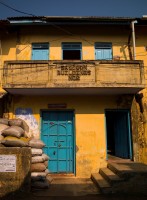 The Ginger warehouse was particularly fascinating for I could see ginger laid out in the courtyard to dry under the sun. The place also has a “pepper exchange”, like a stock exchange.
The Ginger warehouse was particularly fascinating for I could see ginger laid out in the courtyard to dry under the sun. The place also has a “pepper exchange”, like a stock exchange.
The fact that even in its reduced state the spice market continues to thrive to this day was apparent as we found workers sorting, picking, drying and packing spices. There were push carts and containers moving up and down, transporting loads of spices to and from the warehouses. Many of these warehouses had colourful wooden doors, which I thought was were very beautiful and full of character.
 At places, as we walked past the warehouses, we found the air redolent with the rich fragrance of spices, just as it was, centuries back. The aroma that hung in the air in a bygone era continues to linger even today. Times had changed, but certain things still hadn’t, I though.
At places, as we walked past the warehouses, we found the air redolent with the rich fragrance of spices, just as it was, centuries back. The aroma that hung in the air in a bygone era continues to linger even today. Times had changed, but certain things still hadn’t, I though. 
******************************************************************
Other communities in Mattancherry:
While Mattahcnerry was once the cradle of a Jewish community, it was and continues to be home to small but thriving Konkani, Jain and and Kutchi-Muslim communities.
The Konkanis:
The Saraswat Brahmins from the Konkan coast (Goa) began coming to Kerala in small numbers from the 12th century but it was after the Portuguese invasion of Goa in the 16th century that, fearing forced conversion to Christianity by the overwhelmingly intolerant Portuguese invaders, the Konkanis started fleeing to Kerala in larger numbers. In Mattancherry, yet again, the Raja of Cochin gave them refuge.
Well established, the Konkani community of Mattahchery has produced many renowned scholars, academicians, administrators and traders. They are said to have retained their distinctive religious practices, cultural identity and way of life till this day.
Gujarati Jains and the Gujarat Street:
Along with the Hindus and Buddhists, the Jainas are one of the existing ancient religious groups of India. Most Jains are from Gujarat and Rajastan and many have over the centuries, migrated to other places in India and set up flourishing businesses. Mattancherry is host to one such small Gujarati Jain community and there is a Jain Temple, dedicated to Shri Dharmanath, the 15th Jain Tirthankar. This sprawling temple complex was built in 1960 and the architecture is similar to that of the Jain temples of Gujarat.
The Gujaratis live in the area between Gujarati Street and Palace Road, near the Jain temple. Being strict vegetarians, Gujarati Street has few restaurants that serve only pure vegetarian food, Gujarati sweets and savories called Farsaan. We didn’t have the time to try any though.
Kutchi Muslims or Kutchi Memons:
Yet another migrant group that has contributed significantly to the social and economic milieu in Mattancherry is the Kutchi Muslims – also known as Kutchi Memons. This trading community, which has its origins in the Kutch area of Gujarat, arrived in the Malabar Coast, the Mattancherry area in particular, in the 19th century and went on to become well established traders and businessmen. The Kutchi Memons speak a language/dialect that is a mixture of Sindhi and Gujarati and once again, like most other immigrant communities, they have integrated themselves very well in their adopted land, while retaining their language, customs and traditions.
Most of the Kutchi Memons live in the Kochangadi area. In the past, the Kochangadi area was a center for seafood processing exports. Kutchi Memons have their own mosque, the Chembitta Palli, which literally means “Copper-coated Mosque”. Also to be found in the area are the shrines of Sheik Ali Ibnu Sainuddin Maqdum Thangal and his daughter Sainaba Beevi.
End Note:
As we left Mattancherry for Fort Kochi, I couldn’t help think about the erstwhile Hindu rulers of the land. The Jewish heritage of the Malabar Coast speaks volumes about the remarkable large heartedness of the erstwhile Chera emperor who first settled the Jews in Cranganore in the 11th and then the Cochin Raja, who in the 15th century granted the Jews land next to his temple to build a Synagogue. Both these rulers not only gave the Jews – persecuted elsewhere all over the world – protection and a place to settle, but also granted them religious, social and economic freedoms. It also spoke highly about Kerala – a land that has, since centuries, sheltered all religious groups and enabled them to flourish.
Mattancherry, with its Dutch Palace, Jew town, Synagogue and the old spice market I thought was a fascinating palimpsest – like a manuscript that had been written over a partly erased older manuscript in a way that some of the old words could be read beneath the new..
In my next post, I invite you to continue this amazing journey with me – a journey in which I shall relate our experience of the fascinating heritage trail in the adjoining Fort Kochi area.
Meanwhile, I leave you with some more photographs and a map of this fascinating place….
